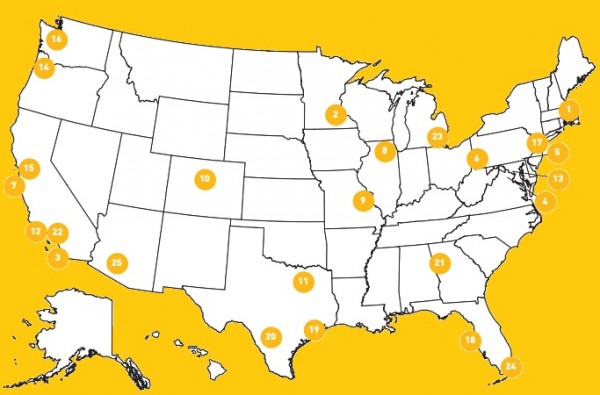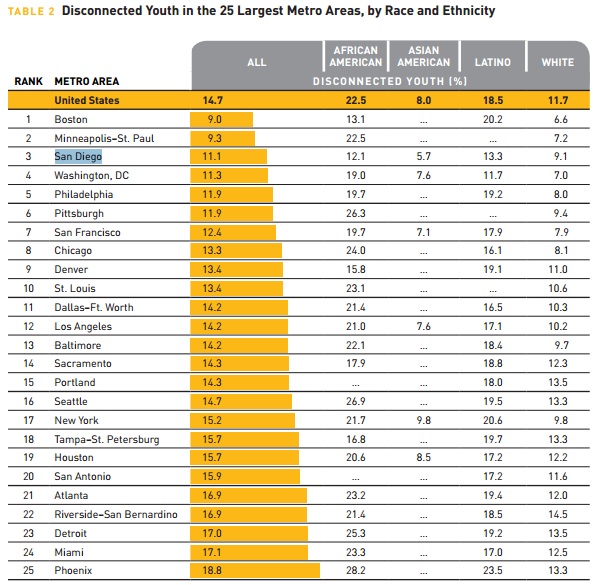San Diego Youth Development Ranks Third Among Metro Areas


Measure of America released a study this month titled "One in Seven: Ranking Youth Disconnection in the 25 Largest Metro Areas." San Diego is among the 25 cities and ranked third in lowest youth disconnection. Youth disconnection is defined by the number of people ages 16 to 24 who are either unemployed or not enrolled in school. While comparing well to other cities, San Diego youth development remains an issue of top priority.
San Diego's youth disconnection rate is at 11.1 percent according to the study. This equates to about 50,000 young adults who do not work or go to school. San Diego also has the fourth-lowest high school dropout rate and third-lowest unemployment rate for young adults. The numbers and rankings are for San Diego as a whole, but disconnection rates vary drastically when looking at different neighborhoods:
In the Southwestern community of San Diego county, including Imperial Beach, almost one in five (18.9%) are disconnected. In the affluent coastal communities between Torrey Pines and Mission Bay, roughly one in every twenty-eight youth (3.6%) are disconnected.
The study included four other cities in California. San Francisco ranked seventh at 12.4% with East Oakland (25%) as the most disconnected and Berkeley (3.3%) as the least disconnected neigborhoods. Los Angeles ranked 12th overall (14.2%), their West neigborhood (3.5%) is the least disconnected while Watts (25.1%) is the most. Sacramento ranked 14th with 14.3% and Riverside-San Bernardino ranked 22nd with 16.9% of youth who are disconnected.
San Diego youth development is also making progress in terms of ethnic groups. Youth disconnection for African-Americans and Asian-Americans is the lowest of all metro areas. San Diego had the second lowest disconnection for Latino youth. Some metro areas did not have a large enough ethnic population to include statistics.
Credit: measureofamerica.org
However, we should not just be looking out for ourselves. EdScource stated, “Except for San Diego, all the California metro areas had dropout rates well above the national average. It’s going to cost California dearly in the future.” It may seem insensitive, but state revenues are poured back into its cities and one of its expenses is education. High school graduates between ages 25-34 have a median income $9,000 higher than high school dropouts.
The study says that 10th graders who expect to earn a four-year bachelor's degree went from 43.4% to 84.5% in 1980 to 2002. The study criticizes the "college-for-all" mentality, a change in social norm, by saying:
The idea that anything other than a college degree is second-best is really damaging to kids whose aspirations and interests are not best served by a four-year college degree.
Vocational and technical training schools are valuable for someone seeking certain jobs in the medical field or mechanical field. Measure of America cites:
An estimated 29 million jobs in the next five years will require workers who have a two-year associate degree or an occupational certificate.
The 25 metro areas included in the study make up 40% of the United States population. The national youth disconnection rate is at 14.8 percent. The study concludes that the best solution is to prevent youth disconnection by, "building connections between communities and both educational and employment opportunities."
San Diego youth development is an important issue in the mayoral race that concludes this November. Candidate Bob Filner has released a plan for a collaborative San Diego youth development system where government actors, academic institutions, and businesses work together. Candidate Carl DeMaio has emphasized mentoring and after-school programs for more community involvement.



